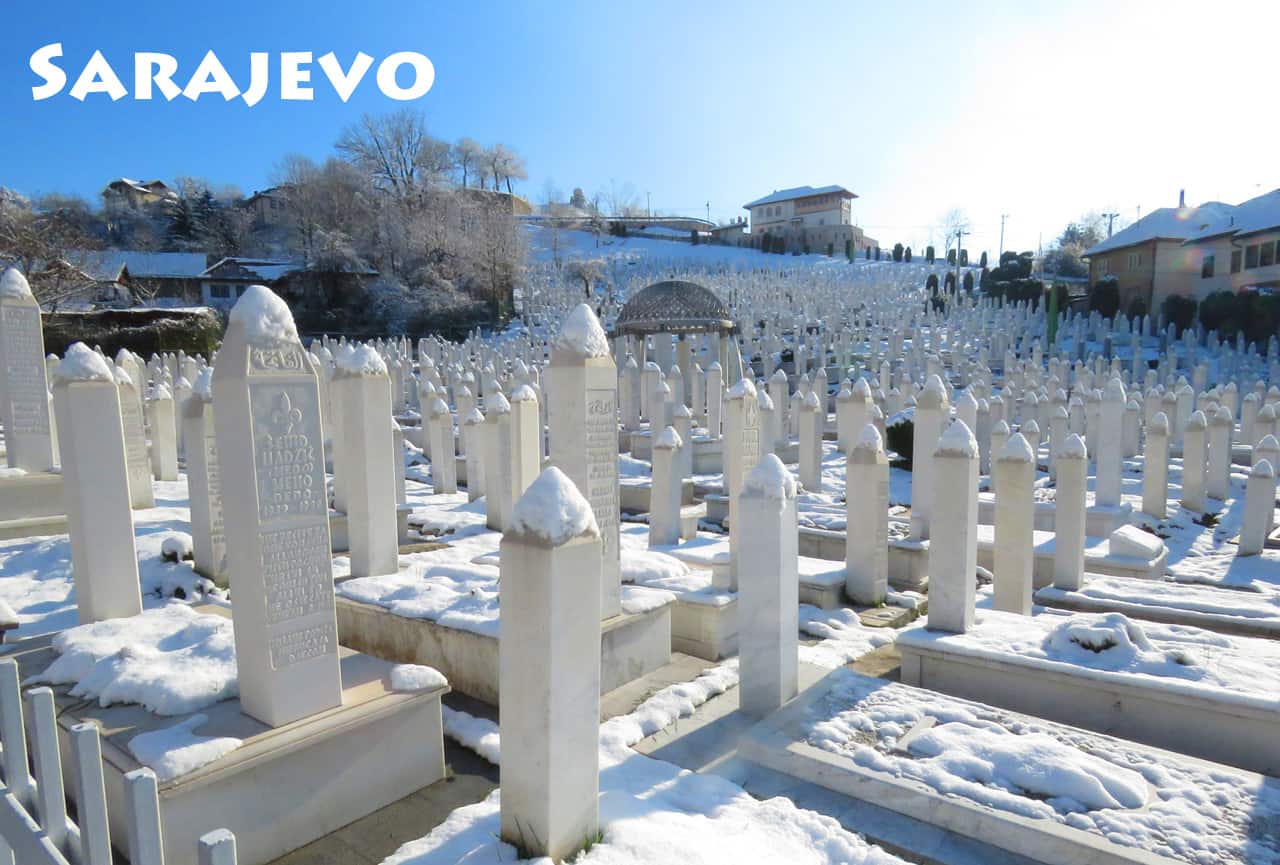
I just got back from Sarajevo. I’d like to be able to say that Sarajevo is a beautiful and interesting place, marvel at its history of being the “Jerusalem of Europe”, talk about how the people are welcoming and what gracious hosts they are. All of that is true. But to stop right there would be to give you a glib, half-assed version of what I felt spending a week in the city. The truth is that the more time I spent in Sarajevo the more depressed I became about the current history not only of Sarajevo and Bosnia and Herzegovina, but of the Balkans as a whole.
Readers of this blog know that we’re big fans of the Balkans. We’ve visited almost every country in the region now (Albania excluded) and everywhere we’ve gone we’ve been met by hospitable, gracious people. As visitors, I don’t think you will get more welcoming hosts anywhere in the world than you do in the Balkans where, upon entering the door, you’ll often be greeted with cake, Turkish sweets, coffee or even a home cooked meal. You think that’s incredible? On my last day in Sarajevo I met 2 elderly men. They invited me to a restaurant where we spent 8 hours talking about Bosnia over wine, pizza, and Bosnian delicacies. We ended up drinking 4 bottles of wine. At the end of the night, no matter how much I protested, they refused to accept a cent of my money. So I’m not exaggerating when I talk about the incredible Balkan hospitality.
With so many great people in the region, it is almost incomprehensible that these same people, between them, can’t get along. Not even close. As one of the two men said to me, “we must have something wrong with our heads. Maybe something wrong in our genes. It doesn’t make sense”.
.
Visit Sarajevo today and much of the history is focused on the siege of the city during the Bosnian War that started in 1992 and ended in 1996.
I’ll keep the history as short as possible:
– Yugoslavia started to break up in 1991, the republics of Slovenia and Croatia declaring independence.
– After a referendum, Bosnia and Hercegovina declared independence in 1992. Of the 6 republics of Yugoslavia, it was the most ethnically diverse of the republics with significant Serb and Croat minorities. Bosnian Serbs didn’t support independence from Yugoslavia (who’s capital was Belgrade, in the republic of Serbia)
– What followed in 1992 was the beginning of the Bosnian Wars in which Bosnian Serbs, supported by Serbia, laid siege to Sarajevo. The Serbians controlled the majority of the Yugoslav army, at the time the 4th largest army in Europe. Fighting them were a combined force of Bosniak (ethnic Muslim) and Bosnian Croat forces. Sarajevo would be under siege for almost 4 years with no electricity or water, with civilians getting shot in the streets and bombed in their homes. 11,000 civilians, including 1,600 children, were killed. The UN secured the airport, brought in food supplies, but it was pitifully inadequate.
– In 1992 the Croats turned on the Bosnians and, like the Serbs, made a land grab further south [I’ve previously written on Mostar – it was the most heavily destroyed city in Bosnia and Herzegovina].
– In 1995, the Bosnian War ended, first with the Washington Agreement bringing peace between Bosnians and Croats. After the famous Srebrenica massacre, NATO intervened militarily, ending the Serb – Bosnian conflict. Essentially, nobody was the victor in this war. The Dayton Accord spelled out the terms for peace for Bosnia and Hercegovina, including the establishment of a 3-person Presidency (a Bosniak, a Serb, a Croat). Together, they serve a 4 year term. The Dayton Accord also created Republika Srpska (meaning “Serb Republic”) as a 2nd constitutional and legal entity in Bosnia and Herzegovina. (ie. Just to clarify: Bosnia and Herzegovina is made up of 2 entities, one being the Federation of Bosnia and Herzegovina, the other being Republika Srpska).
I’ve highlighted important stuff above that I’ll be referring to again below. Just know that really none of the parties in the conflict are happy with the results of the Dayton Accord.
I’ve kept it factual, ignoring the ethnic cleansing, concentration camps, and killing of civilians. Many people will tell you all the above has happened to one group or another in the Balkans, including to the Serbs in World War II. There’s a long list of grievances on all sides.
One of the tours that everyone should do in Sarajevo is a Siege Tour. Included is all the history that I’ve mentioned above (in much more detail) and how citizens survived, in part because of an underground tunnel built under the airport. The tunnel was a conduit into the city from Free Bosnian Territory (which the Serbs didn’t control) on the other side of the airport. The supplies brought in saved the lives of Sarajevans and also saved the city from having to surrender to the Serbs.
But that’s history and I felt sadness seeing the video watching civilians ducking Serb sniper fire and walking through the tunnel.
But it was the modern part of the tour that made me angry.
– Do you know that the new government had 3 years to choose a flag for the new Bosnia and Herzegovina? They couldn’t agree to anything. After 3 years!! The flag of Bosnia and Herzegovina that you see today had to be decided upon by the UN.
– I’ve mentioned the 3 acting presidents. All decisions need unanimous agreement. It never happens. Everything is done to undermine the political process.
– The country is now split into 2 entities (the Federation of Bosnia and Herzegovina) and Republika Srpska and the population in the two are split along ethnic lines. This is a divided country.
– Government jobs are allocated by nationality, as per the Dayton Accord. So there’s ethnic tensions in the workplace where everyone knows everyone else’s ethnicity. It’s dysfunctional, discriminatory, and just adds to ethic resentment.
– The country gets little international investment and the economy stinks. The unemployment rate about 35%. Some economic numbers.
– 150,000 young people (minimum I’m told) have left the country to work in Western Europe over the last 4 years (the country’s population is about 3.5 million). Our guide had lots of stories of friends who’ve emigrated to Germany or Sweden for a better life.
Bosnia and Hercegovina is a basket case and politicians are intentionally allowing it to happen. That’s what’s really shocking. It doesn’t take a genius to figure out why – a failed state falls into the longer term plans of some of its politicians.
After the tunnel we drove up into the hills and within minutes were in Republika Srpska, where Bosnian Serbs live. Their flags dominate every street corner and there was a big sign welcoming you to Republika Srpska. “They want to know who’s boss around here” says our guide. For those who haven’t heard, politicians from Republika Srpska have been in the news consistently threatening a referendum on the separation from Bosnia and Hercegovina and merging with Serbia. I asked the guide how a Muslim would be treated if coming to this territory: “they would be yelled at and insulted”.
We passed a bunch of mangy dogs (stray dogs are a problem in Bosnia) and were taking to the bobsled facilities used in the 1984 Olympics (Sarajevo hosted the Olympics that year, one of the best Winter Olympics up to that point. 8 years later the country was at war). The bobsled run was used as an artillery position by the Bosnian Serb forces during the war and were inflicted a lot of damage. I’m told they’ve been restored but all I see is graffiti and old cement.
A 5 minute drive from there brings you to old ruins. It used to be a popular restaurant with wonderful views of Sarajevo. During the war it was used by the Serbs and was targeted by NATO jets when they finally decided to step into the war. It’s totally ruined today although my guide tells me “they’re talking of re-building it…but that would mean the government would have to vote on it”.
So basically no, it won’t happen.
Depressed yet?
We went to the old Jewish Cemetery, the 2nd largest Jewish cemetary in Europe. In the days of the Ottoman empire, Sarajevo was indeed the Jerusalem of Europe. In 1492 when the Jews were expelled from Spain (kicked out by the Catholics) they were welcome in Sarajevo where they became doctors, pharmacists and businessmen. At its peak, before WWII, the Jewish community numbered about 14,000 in Sarajevo, about 20% of the population. During the war, Bosnia and Herzegovina came under the control of the ‘Independent State of Croatia”, a Croatian puppet government of the Nazis. They murdered hundreds of thousands of Jews, Serbs, and Roma (gypsies). Today the Jewish population in Sarajevo numbers about 600 and they have only one active synagogue.
I asked the guide what he thought the future was for Bosnia. He shrugged and sighed and said he didn’t know, except that he hoped there would never be another war. He mentioned that Czechoslovakia had separated with an agreement celebrated over a bottle of champagne.
Honestly, does anyone believe that will happen in the Balkans?
The next day I was on a walking tour through downtown Sarajevo. Our guide was a charming 30 something year old Bosniak lady who spoke perfect English. Again, it was early December so there were only 2 of us on the tour. It meant being able to ask questions.
“So what’s the difference between Croats, Serbs and Bosniaks?”
“Nothing really, except for history and religion. But originally we are all the same Slavic people, speak the same language although for identity reasons we call it different names (Bosnian, Croatian, Serbian). But they’re more similar than American English to British English. The difference really is the history and the different religions that developed as a result. Honestly, if you see us on the street you wouldn’t be able to tell us apart. But the major identifier is religion – if you’re Catholic you’re Croat, if you’re Muslim you’re Bosnian, if you’re Orthodox you’re Serb. Nobody is going to identify themselves as a Muslim Croat or an Orthodox Bosnian. It’s really about religion”.
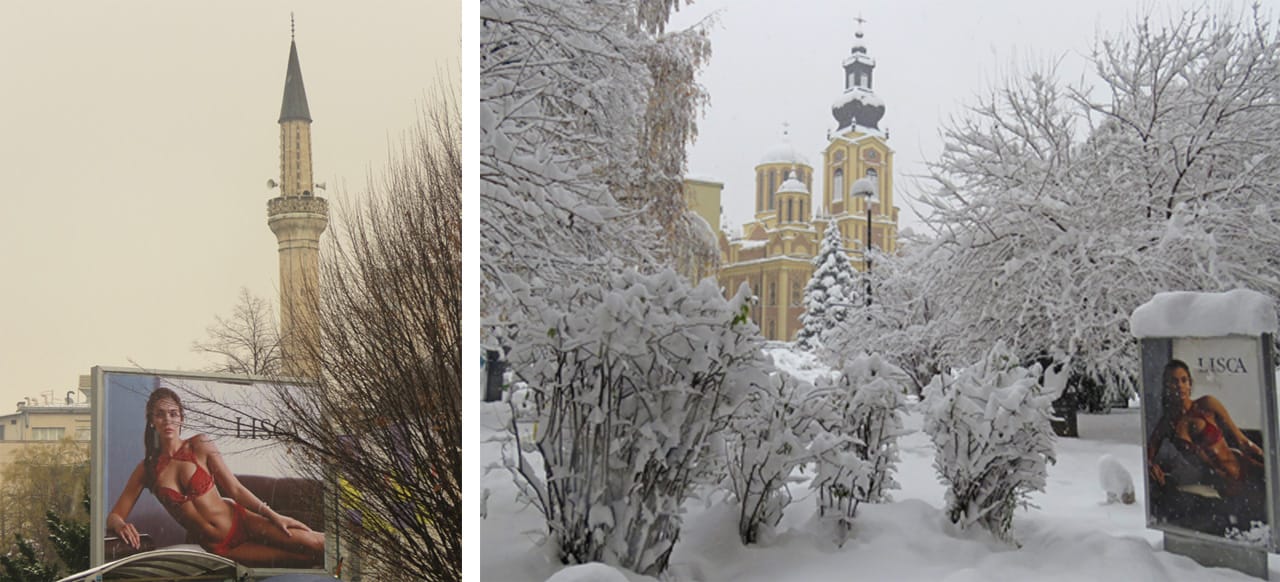
I have a hard time convincing myself that Bosnians are Muslim. Yes, many women wear shawls and you hear the chant from the mosque. But you also see the men wearing the typical Balkan sweatpants, you’ll see the same underwear advertisements on billboards that you see everywhere else in the Balkans, and most women you’ll see walking around Sarajevo are dressed just as they would in Croatia or Serbia. Bosnia is “Muslim-lite”. I asked about what were clearly Muslim tourists walking around, the men more conservatively dressed, the women wearing Niquabs. “We get many tourists from Saudi Arabia, Turkey and Iran”. She told me that these countries had promised to invest in Bosnia’s infrastructure “but so far they’re just building mosques”. She told me that Muslim visitors are shocked by how Bosnians conduct themselves, the way most women don’t cover their hair and how people drink beer just meters from the mosque. “We’re Muslim, but we are a different kind of Muslim. We’re European first”.
Our guide added one more thing. “You know, when the Serbs attacked us some said they were getting back at us for the Ottoman times. How stupid is this thinking? The Ottomans came here and converted Bosnia to Islam. It is not us that attacked the Serbs”.
I walked around the city center, walking down the main street nicknamed Sniper Alley during the War. I recognized the two towers that had been burning in the video at the museum. They had been fixed up. They are still the only two skyscrapers in the downtown core. Right next to them is the Holiday Inn which served as the base for all foreign journalists. It was one of the few buildings where they had electricity and water. It’s been fixed up as well and has new management. The hotel is now called Hotel Holiday. I’m sure there’s a joke about that somewhere. All around the city are red splotch marks on the sidewalk, they indicate where people died because of mortars. Everywhere you see a red splotch at least 3 died. You’ll still see tons of buildings with shrapnel holes. The strange thing is that Sarajevo’s central district looks almost as it did in the video from the war. Those two towers and the hotel next to it dominate the landscape. This is maybe the most disturbing thing – except for repairs, the cityscape hasn’t changed in 22 years. Show me photos of almost any city 20 years ago compared to the present day. They’re often unrecognizable. Not Sarajevo. It makes sense: Sarajevo’s population has actually gone down since the war, from a pre-war (1991) population of 360,000 to a population of 275,000 as per the last census in 2013. The composition of its citizens has also changed. Before the war there was more of an ethnic mix with Bosniaks making up 50% of the population, the rest being mostly Serb. Since the war, the Serbs moved out of the city (mostly to Republika Srpska) and now the Bosniak population is about 81%. So the country is now segregated along ethnic lines contained within different political boundaries.
But this isn’t so much a reflection on Sarajevo or on Bosnia and Hercegovina. It’s a reflection on the Balkans. The reason Bosnia and Hercegovina is in the crosshairs is because of the ethnic mix in the country. I had told one of the guides that some people compared the situation in the Balkans to African tribalism. He had looked down, thinking about it, before replying “there are a lot of stupid, uneducated people here in the Balkans”.
Sarajevo was nicknamed the Jerusalem of Europe because it was where 4 religions (Islam, Christianity, Orthodoxy, and Judaism) co-existed. You’ll still see religious houses of the 4 faiths walking around the city. It’s inspiring. But Sarajevo has gone the way of the rest of the Balkans in terms of segregation of ethnicities: Serb minorities left Croatia after the war, just as they left the Federation of Bosnia and Hercegovina. Croatia is now overwhelmingly ethnic Croatian (90% per last census), Serbia is 83% Serbian, Bosnia and Hercegovina is the most ethnically diverse (50% Bosniak, 31% Serb, 15% Croat) BUT when broken down among the two political entities in the country you get a truer picture – the Federation of Bosnia and Hercegovina is 70% Bosniak, 22% Croat (all near the Croatian border), and 3% Serb…the Serbs have all moved in Republika Srpska which is 82% Serb, 14% Bosniak, and 2% Croat. It paints a picture of 3 ethnicities that won’t co-exist.
So what is the issue in the Balkans?
.
The two older men that I met on that last day in Sarajevo are Bosniaks. Both served in the army protecting Sarajevo from the siege. They lost a lot of family and friends in the war. They spoke of children getting killed playing in their backyards. They lamented the fact that Bosnia and Hercegovina is the basket case it is today. “There is nothing here. The biggest tragedy is that all the young people are leaving. There is no future in this country”. I asked them what I had asked both tour guides “So what’s wrong with the Balkans?”. Their answer: “Too many uneducated people that the politicians can manipulate through nationalism and religion. It doesn’t make sense – we have friends and family in Croatia and Serbia. We have more similarities than differences”. Then he uttered what I mentioned at the top of this post ““we must have something wrong with our heads. Maybe something wrong in our genes. It doesn’t make sense”.
While I was in Sarajevo the news came out about Slobodan Praljak, the Croatian General who committed suicide in court after being charged with war crimes relating to the siege of Mostar. I came back to Croatia where the indictment and suicide have opened up fresh wounds. Croatian politicians are denouncing the verdict and want to challenge the ruling. Many Croatians are calling him a war hero – just as in Serbia where indicted war criminals such as Slobodan Milosevic and Ratko Mladic are regarded by Serbs as war heroes. This is the Balkans, where old grievances are never forgotten and where retribution is always on the mind. It reminds me of obsessed sports fans – otherwise rational people – who count every perceived offense or slight against their team (whether by the other team or by officials) and hold on to every one of these injustices, counting the days until the next game in the hope they’ll get justice. The obsession is with injustices of the past, the future with settling the score. This is the Balkans today. And that’s what’s depressing.
When I lived in Africa as a child, we had family friends from Yugoslavia. As many people tell me now (and it doesn’t matter whether it’s Croatia, Bosnia, Serbia, Montenegro or Macedonia) the Yugoslav passport at the time gave citizens access to the entire world, East and West. Talk to them and you can feel the nostalgia and pride. They’ll tell you that Yugoslavia was a ‘real’ country, accepted and respected by the world community. Tito, the authoritarian leader of Yugoslavia (some would call him a dictator), also brings up nostalgia. When we first came to the Balkans 3 years ago feelings about him seemed a bit more mixed. It seems to me that people hold him in higher esteem today. I was actually surprised to hear one of our guides in Sarajevo refer to him as “our great leader”, probably the most respectful title I’ve heard yet. Nostalgia and memories of better times does that.
Below: A few examples from Sarajevo’s War Childhood Museum (worth a visit)
Please don’t let the above discourage you from visiting Sarajevo. It is yet another interesting pocket of the Balkans, with a unique culture and very welcoming people. We’ve had personal experiences in the Balkans unlike anywhere else in the world. It’s part of the reason we try so hard to understand the history and mentality. But Sarajevo is more than just it’s war history – it’s also a very scenic and atmospheric city.
Related: Sarajevo: and all the reasons why it’s worth visiting
Related: The Best Balkan capitals
Related: Hate and Sadness in Mostar
Ps. If you find our blog helpful, please consider using our links to book your flights, hotels, tours, and car rentals. Have a look at our Travel Resources page.

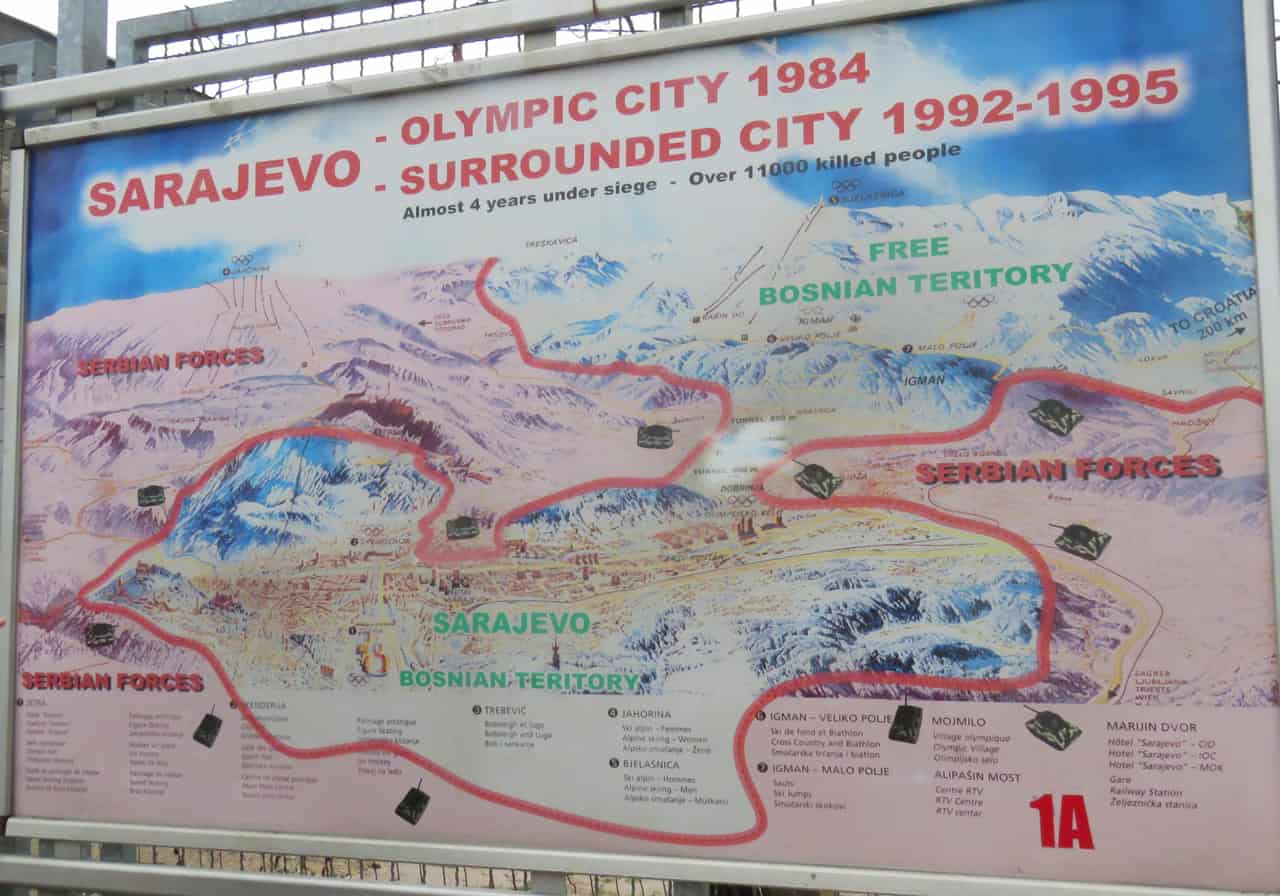


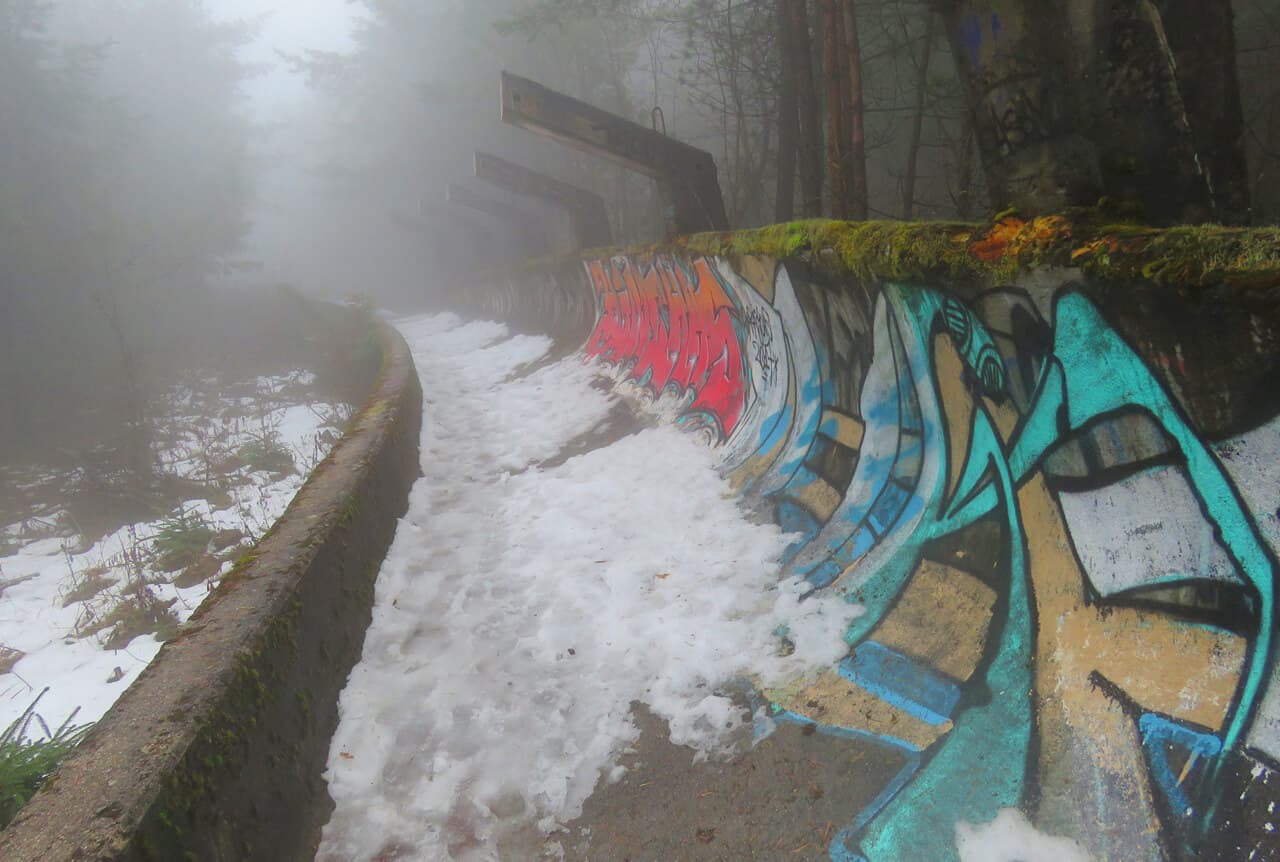
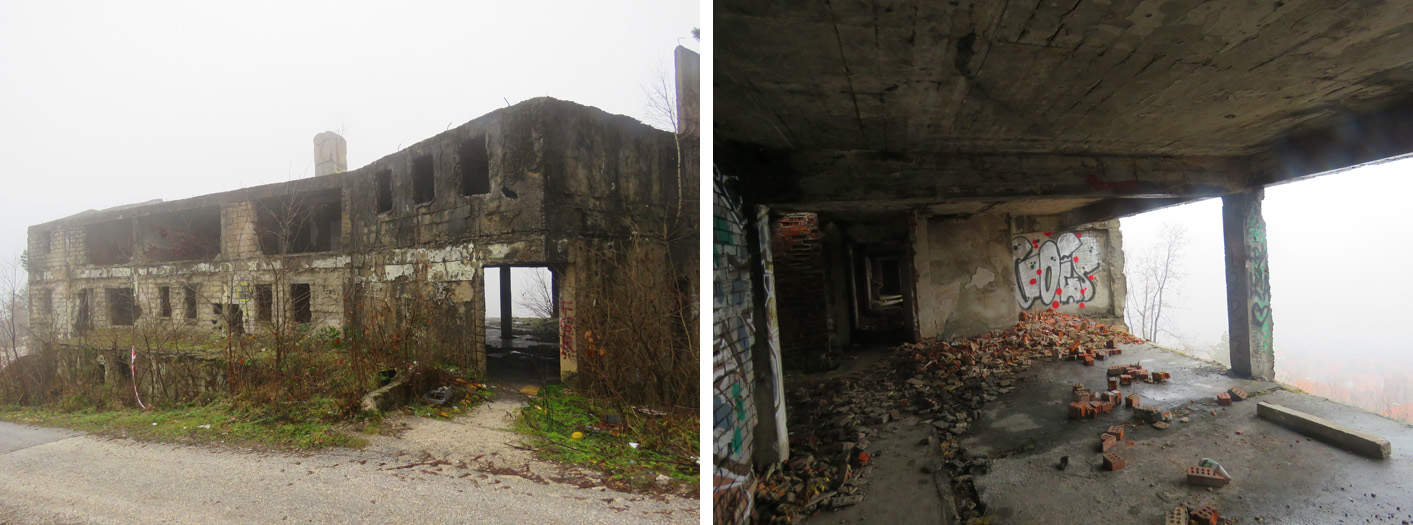
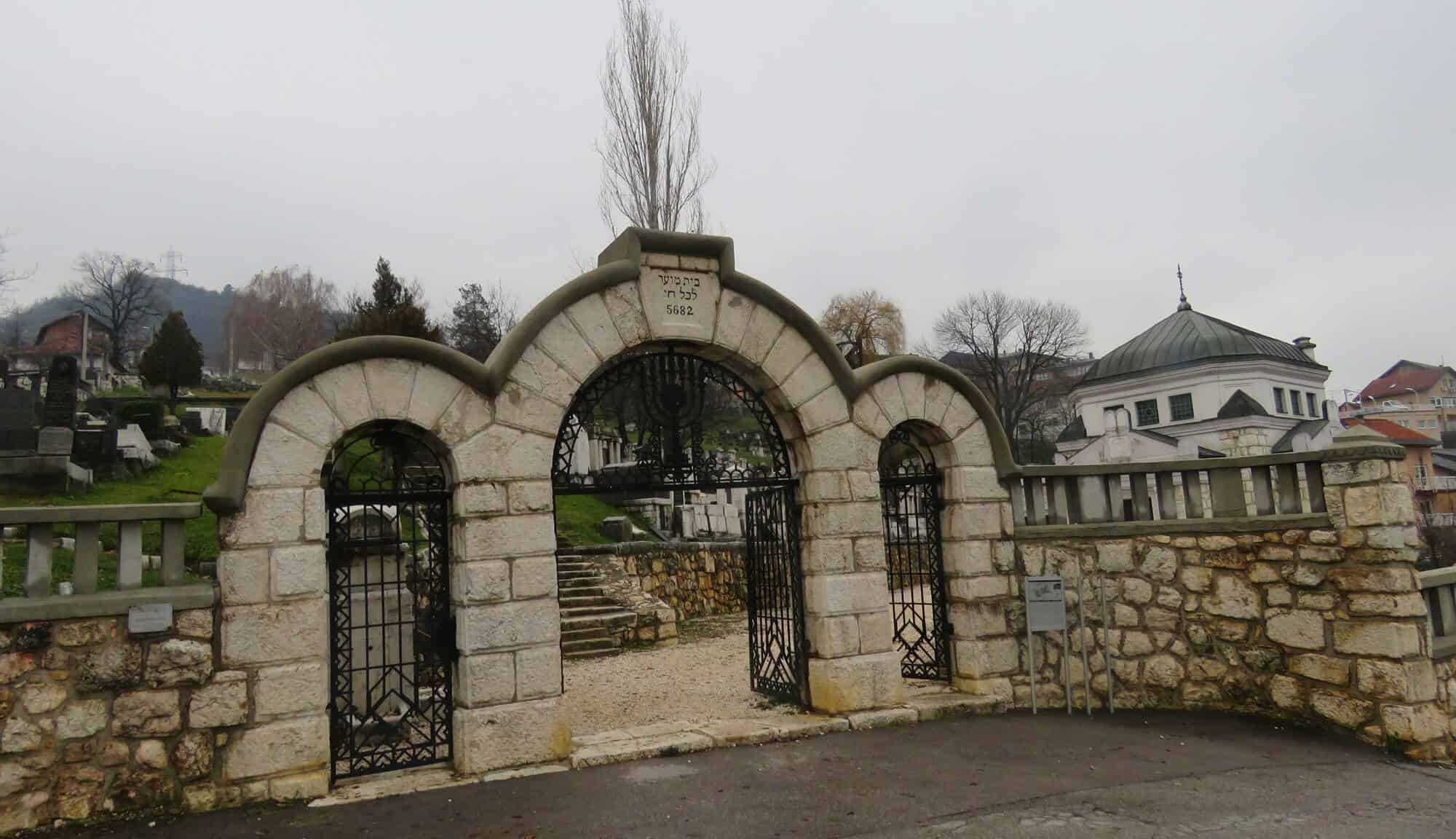
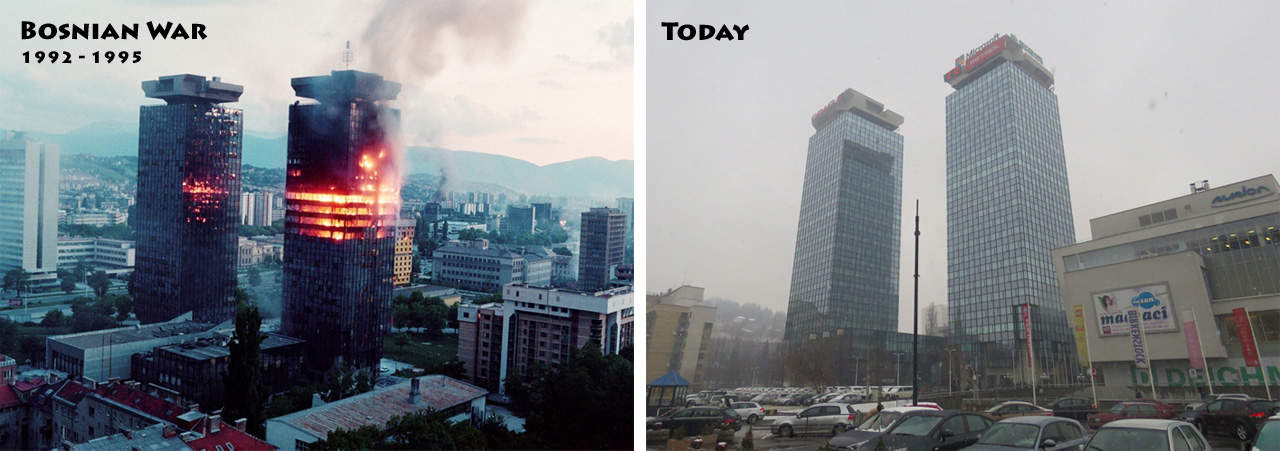
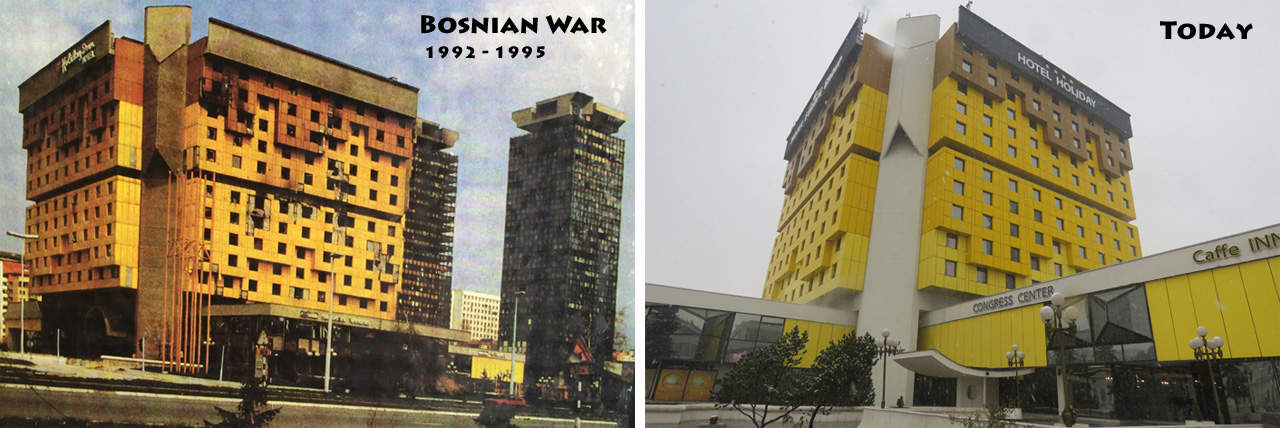
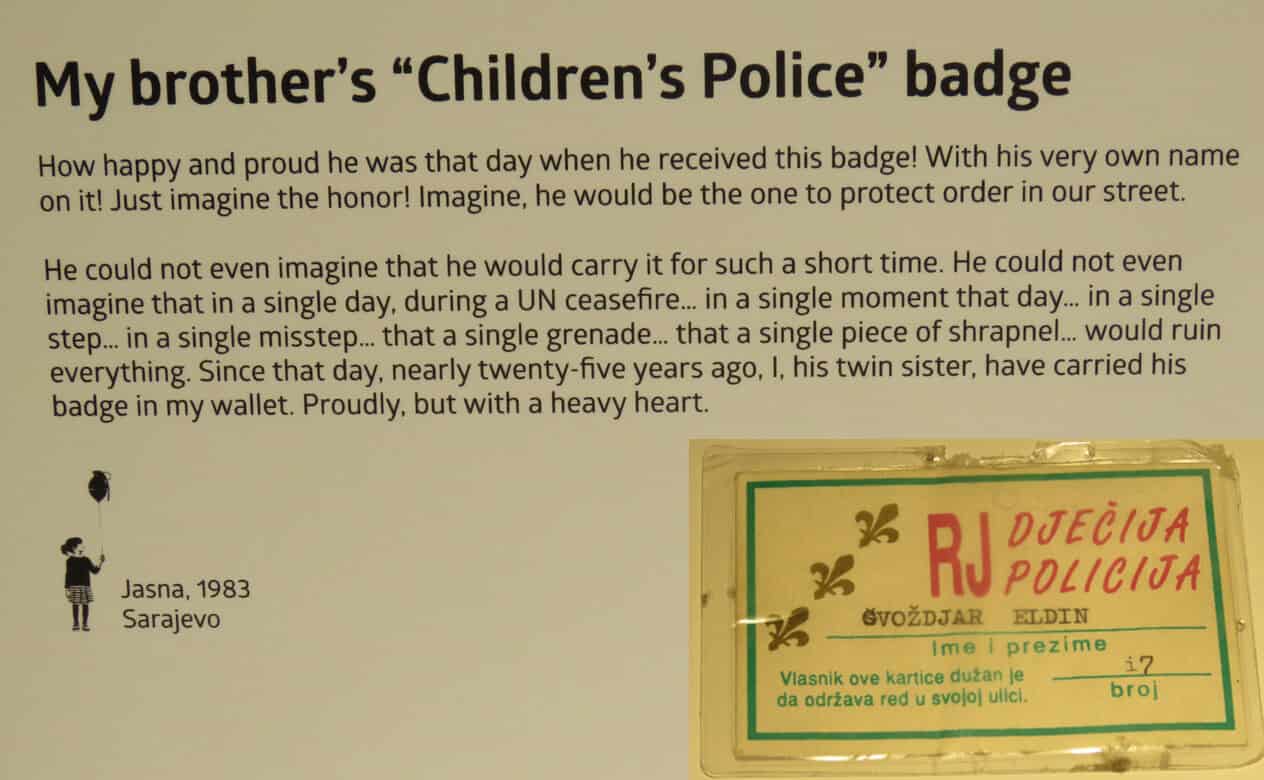

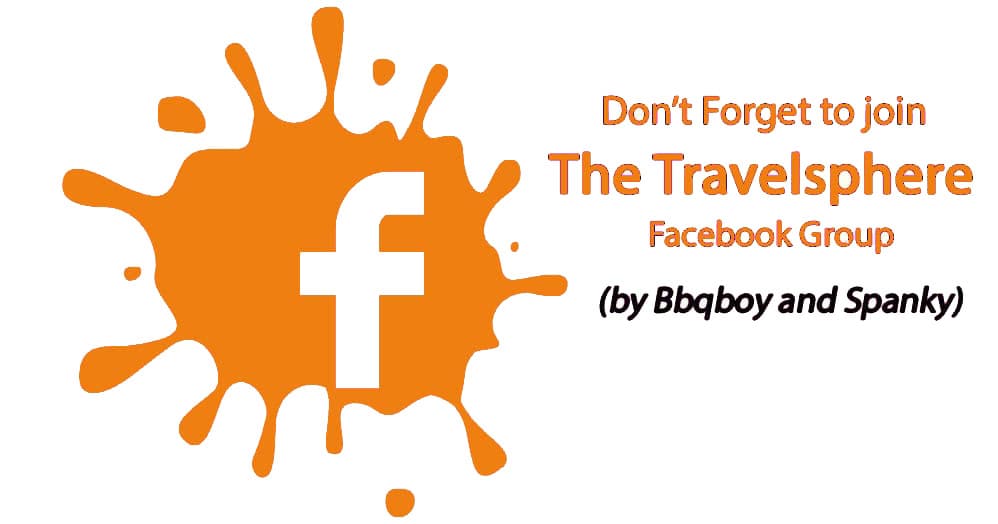
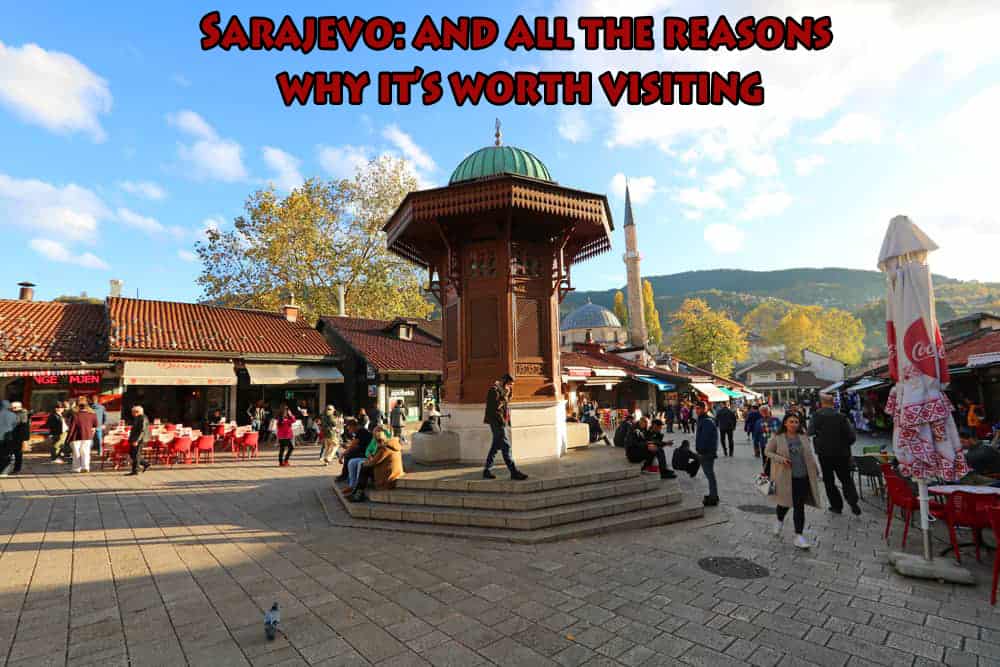
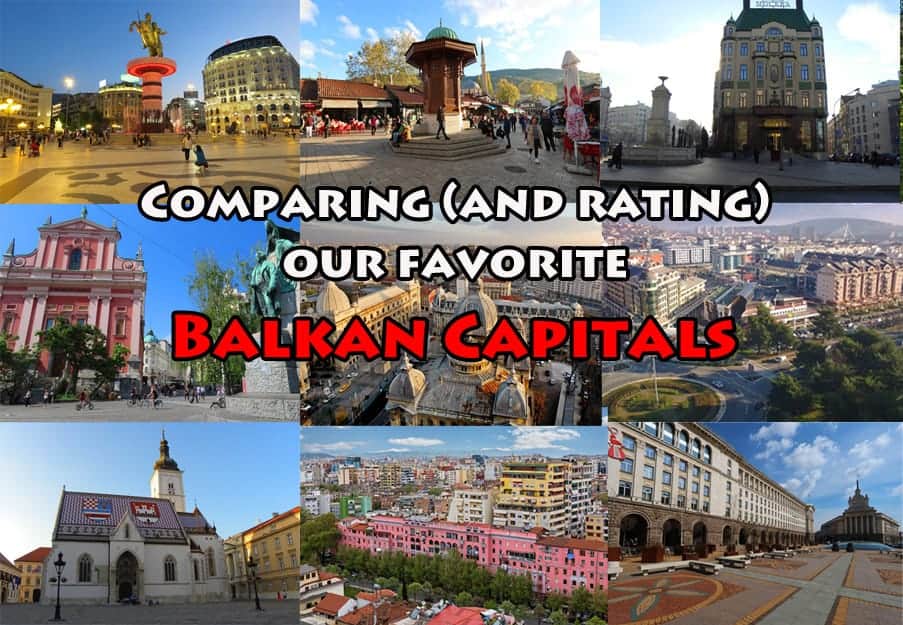
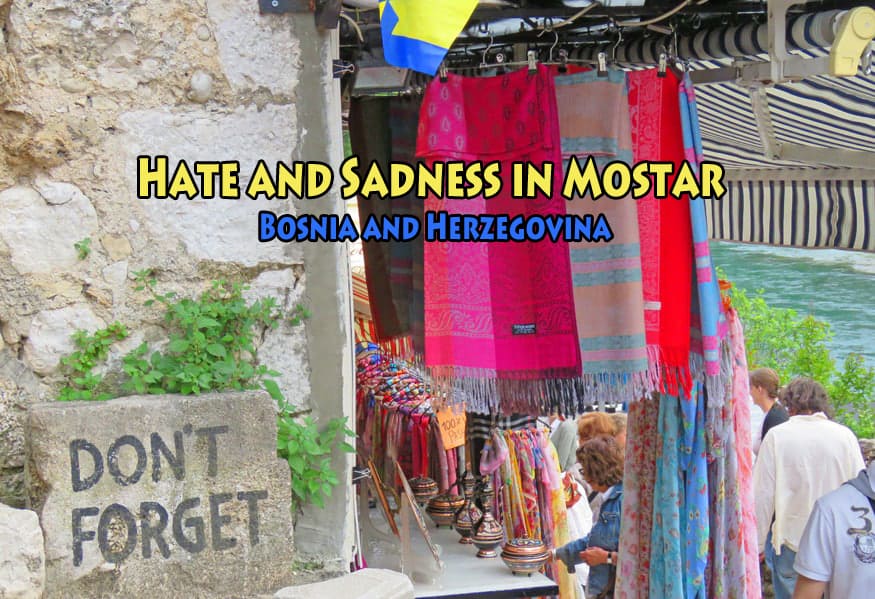
Very helpful posts, just came back from Sarajevo and find these a great addition to my own opinion of the country, not far off !
Thanks Sam!
This is why I dislike when people NOT from the region write post their opinions about the region. Pretty much all their (mis) information is culled from the opinions and heavily omitted history versus actual in-depth research in the native language of the respective countries.
FACT – everyone in Bosnia is Bosnian, unless they moved from another country. For some bizarre reason, Nationalist pockets believe that their religion indicates their ethnicity – not so. These people and their families have lived in Bosnia literally for centuries. These so-called “Croats and Serbs” are not Croats or Serbs and are not even eligible for citizenship. When/if they are, they have a tendency to move to said countries, partake in corruption and exploitation than run back to Bosnia as soon as they get convicted (see: Zdravko Mamic, Miroslav Kutle though in Mamic’s case he was the first-generation to be born in Croatia).
FACT – we are NOT the “same people”. Even genetics/DNA confirm this. Languages and dialect can differ within the countries, let alone across the region. Though many people do understand each other, that is not the case for everyone. Very few people not of the Orthodox faith read/write Cyrillic, so anything written in that alphabet is like reading Chinese and makes no sense. Not to mention in many capacities that conflict is quite recent. Serbians have only been despising Croats in the last 150-200 years, after Serbian nationalists began their diatribes and assassinated 3 politicians from Croatia in the 1920’s, the most notable being Stjepan Radic from Croatia’s Peasant Party. The Serbian politician who assassinated them was sentenced…to house arrest. Indicating essentially his actions were supported by Serbias political elite. Serbia has centuries old animosities with the Ottoman empire (hence the insanity of the Yugo wars where nutcases like Ratko Mladic enacted “revenge”) not to mention the incessant conflicts and assassinations they have – and continue – to enact on other Serbians. Keep in mind, this refers to nationalists, not the average citizen who has next to nothing to do with any of this insanity.
FACT – The Socialist Federation Yugoslavia was made up of republics and provinces. Other than Titoism, there is not such thing as being “Yugoslavian” culturally as each republic (now nation) has their own cultures, let alone cities and towns. When you look at birth certificates of family members during said time, their ethnicities are clearly stated, and bear the respective republics seals and stamps on all documents.
FACT – During WW2 Croatia’s so called “fascist state” was made up of emigres (spearheaded by Bosnian born and bred men). Their alliance with the Axis was not the will of the people. This alliance with the Axis on behalf of the NDH led to annexation of crucial land (Dalmatia) to Italy. The Ustase had approximately 80,000 soldiers. 5 times more partook in resisting the axis. Thousands of Croats were killed by Chetnik soldiers who collaborated with the Axis, as well as by Axis Germans, Axis Italians, Danube Swabian units as well as by the Ustase who killed Croats (though historical revisionists not call them “communists” as God forbid anyone finds out Croats were massacred during WW2). Close to 30,000 people from Dalmatia were evacuated to El Shatt camp in Egypt – mostly Croats by the way – when Italy capitulated and the German Axis poured into Dalmatia. War crimes executed against local Croats – including by the Ustase – were plenty. Not to mention the bombing of our cities. People from my ancestral villages if they were not burned alive or executed or raped (or 2 our of 3) were sent to concentration camps where they died both within and outside the country. If you read the language, you would know this. Instead, because you don’t you continue to historical revision by omitting Croatian resistance AND our casualties. Probably the most famous resistance fighter from Croatia was Stjepan Filipovic from Opuzen. He has a Spomenik in Serbia where he was handed over to the Axis by a Chetnik batallion and murdered by lyching. Serbs are taught he is Serbian. Or, as Nationalists do, call him “Yugoslav” to continue the false narrative that Croats played zero part in resistance movements (and conveniently omit that close to 24,000 Jewish people were killed around Belgrade as Serbia was the first country to be declared Juden free. Currently, rehabiliation of Chetniks who collaborated with Axis is being white-washed from Serbian history – with descendants going to court to insist their murderous patriarchs were “honorable”).
FACT – every European country that played a part in WW2 had people pro and against the Axis – Serbia, Croatia, Bosnia, Slovenia etc included. Serbian Chetniks collaborated with the Axis, and Serbians also resisted. Ditto for the other nations, including Bosnia where Muslims collaborated with the Ustase. Many of them met their fates in the pits of Slovenia and around the nation. Many also escaped to live long lives abroad in countries like America that refused to extradite them (e.g. Momcilo Dujic, ditto for Ustase officials in Spain and Argentina).
FACT – Children in Bosnia are taught different curriculums, dependent on so-called “ethnicity”. Which means all 3 sides are being taught different versions of history so the opinions you hear are not necessarily historically accurate. Not to mention anyone can modify Wikipedia. I should know – I am seeing massacres being rewritten in Wiki as being another ethnicity, and the killers falsely accused of other ethnicities though the truth can be found not only in the Nuremberg trials records but also the WW2 victims list in Belgrade (also available online).
Please – if you want to “talk” about something – be educated instead of contributing to the narrative of miseducation.
Thank you for all your information. I think you have inferred “Misinformation” or “Miseducation” into my post by nitpicking facts or by omission. This was not supposed to be a 500 hundred page book on the Balkans.
Fact 1. Yes, of course they are “Bosnian”. It’s why we hear of “Bosnian Serbs” or “Bosnian Croats”. And the Serbs always made sure that Bosnian Serbs were the guilty party just as “separatist Ukrainians” (and not Russians) are being blamed for what’s going on in Eastern Ukraine. Fact 2. Yes, you mention Cyrillic. But the spoken language is hugely the same and people do understand each other. And I understand the centuries of conflict but not quite sure where I’m to blame for all that…and I know that not everyone in Croatia supported the Axis. But I’m sure many Serbs didn’t support their government either. And of course every country had collaborators during the Balkan wars just as countries like Poland and France had collaborators during World War II.
I don’t disagree with anything you say, I just think you’re splitting hairs. As I say, this is a blog, not a 500 page book on the Balkan Wars where I detail everything dating back to the Ottoman conquest of parts of the Balkans…
By the way, for other readers (since you might not like an outsider’s perspective), BBC did a great documentary on the Balkan wars and all together it’s about 5 1/2 hours of detail: The Death of Yugoslavia
Thanks for taking the time to comment!
Hello Frank, I really enjoy reading your thoughts and perspectives, we are about to visit Sarajevo for the first time, and it is our first time in the Balkans. Your summary sounds like what I would expect to experience. I was born in Russia and moved to Sydney Australia with the entire family when I was 20, in 1992.
We all spoke English fluently as we went to English schools, already had family in Australia and our integration was a smooth process. From what one reads from different relevant sources, these people of the Balkans do NOT wish to make this work, as national pride and urge to have an identity overrules anything else. They would do anything to prove you wrong, because they have been so involved in politics that they have become POLITICS themselves. They associate themselves so closely with their nation and are convinced that their way is the best way, just like the Russians, who lean towards the right wing. They have been fighting for something for so long, that as they say…’you can take a man out of the country, but you can not take the country out of a man’. It will take a movement like Yellow Jackets in France to create change, but they have to be willing to do it.
Jenna
Thanks for the comment Jenna. I don’t think they purposely DON’T want to make it work, but I think their history and personal experiences make it hard to happen. They need a Nelson Mandela.
Despite that, the Balkans is a fabulous and diverse region. I hope you enjoy your trip 🙂
Based on our visit to Sarajevo, this story is so accurate in capturing its complexities and future concerns. Well done.
Thanks very much Michael!
great post!
Thanks Tanja. Always nice getting feedback from a Croatian.
Just a simplistic and probably unpopular thought here, prompted by an outsider’s (never been to Eastern Europe, haven’t studied it) first impressions when trying to get a grip on the history and current situation in the Balkans. I was reading a Feb., 2000, issue of National Geographic with an article on Albania. That led me to Google “WTF is wrong with the Balkans?” and to your very interesting blog. But i already had a theory based on the photos in that Nat’l Geo. In almost every photo of public life, women are nowhere to be seen. It’s men, men, men. In fact, there was one photo of an Albanian “sworn virgin”–a woman who had to dress and act as a man in order to maintain her family’s name and property after all the other men in the family had died. That is, women weren’t (and maybe still aren’t) worth shit. Men arguing; men demonstrating; men with weapons; men burying the dead. The only women shown are grieving survivors of all this male-dominated-society’s violence and pride.
No doubt the women agree with it and are just as opinionated about their neighbors as the men–of course the second-class citizens will go along with their masters. Especially when they’re all likely under-educated and literacy is lacking. (Correct me if i’m wrong!)
Anyway, it’s hard for me to imagine such long-lasting tribalism and enmity in a society where women have equal rights and status with men, and where all have been educated in history, philosophy, etc., especially as to the perils of religious- and language-based sectarianism. It’s like the whole area is Exhibit A as to what’s wrong with fundamentalist, patriarchal societies. Don’t let the wannabe alpha males screw up your families, your cities, your economy, your lives, your centuries…soaking the earth with blood, generation after generation. Evolve!
Hi Laura,
Thank you for taking the time to comment.
You maybe be partly right – but the Balkans aren’t the only part of the world dominated by men. And you will see women everywhere in the Balkans (although I don’t know about Albania). I think I’ve read some of the same articles you cite: I think some of these places (especially in Albania) are backwards, isolated and probably similar to the hillbilly towns in the Appalachians. But a special feature in the region is religion as a divider. In our case some of the most fervent opinions on politics were from a couple of well-educated women (one Serb, one Croat) who you would think would know better. Men might use religion, but women are usually the diehard believers (in my opinion). It shocked me at times talking to them and seeing how narrow and defined their version of the world is. And it didn’t include people from other religions. As a non-believer it’s shocking to me how differences can be made on such trivialities (Orthodoxy and Catholicism used to be the same faith until a 1000 years ago). Instead of looking for similarities, people are always looking for differences.
Men might do the actual fighting but the women are right there espousing the hate as well. I don’t think they get a pass.
The level of general education and culture – not to mention “literacy” (in quote marks because I doubt there have been any literally-illiterate people there in the past 90 years or so) – in most of what people call “the Balkans”, as if it were a monolithic structure (and often in luding even entral European countries), is much, much higher than in most of the “big” European countries and unfathomably higher than in the USA – precisely because of the constant exposure to different neighbours and cultures (but also because of the good, if necessarily flawed, educational system in the ex-Yugoslavia). I can see why anyone unfamiliar with the region would see them as “brutes”, but in terms of education and culture they are anything but.
Albania is a predominantly Muslim country (even though religion was forbidden during the Communist era), and while small, it was much less exposed to any of its neighbours during the Communist era; it was essentially a fortress. So – not a good example of “the Balkans” in general, much less of women’s place in society and their attitudes to men. Especially not based on an old National Geographic issue.
So Helle, what is the issue in the Balkans? If they are so educated why the nationalism, the religiosity, the dwelling on the past instead of the future?
Why are they still fighting over things that happened 75 years ago? (I’m thinking here about Croatia. Have Croatian friends on both camps).
Many ex-Yugoslavs all over Europe and in our Canada as well where they do very well. As you say very educated with a good work ethic.
That’s what happens when someone’s trying to eradicate you and your people based on who and what you are. It’s what happens when you witness your loved ones, neighbours and friends get murdered (regardless of which side we’re talking here). It’s what happens when people refuse to take responsibility and admit their mistakes and crimes committed against each other (some even go as far as to “gaslight” the opposing side).
Regarding the education, I studied in Bosnia, Croatia, Slovenia, Germany and the USA. In fact, I went to universities in the latter three countries. Honestly, the things they were teaching at the universities in Germany and USA, I’ve learnt in elementary school. I used to think that our (Bosnian/Croatian) schools were a bit too much because we had to know everything about every country (geography, history, politics, notable people, etc.) there is, but now, after observing other educational systems, I’m more than grateful. Don’t get me started on maths. I remember learning how to estimate the value of gold at the age of 11.
The average Croatian (Or Bosnian, for that matter. Not sure about Serbs, though they do (usually) speak English) learns at least 2 other languages, besides their own, in average elementary schools. A lot of schools also teach ancient Latin and Ancient Greek. I personally speak 8 languages fluently and can get by in a several more. We don’t get to choose elective subjects in schools or the general difficulties of classes (advanced classes, for example). We’re expected to learn it all.
One more thing – Croats have mixed feelings about Mr. Praljak. Most are ready to admit there were atrocities committed by Croats against Bosniaks during their fight against each other (which didn’t last long, btw). The part they disagree with is Slobodan Praljak having to take the blame for crimes he didn’t commit nor order (especially considering that his own wife’s BosniaK (aka a Bosnian Muslim). He was sentenced due to not preventing the crimes (that he might not have had known about) and killed himself out of pride/honour, despite knowing that he’d already served most of his time and would’ve been released in a few months.
Most regular Bosnian-Herzegovinans simply want to be what they are and don’t care for joining Serbia or Croatia. Most Serbs and Croats don’t even think about them joining us. It’s the politicians (aka RS President, Milorad Dodik) who sh*t talk about that, which causes short term tensions due to people reacting and defending their own, but people usually calm down within a few days. Most of the time we hang out, celebrate our different holidays, birthdays and cultures together.
I’m a dual citizen of B&H and Croatia, but don’t consider myself a “Bosnian Croat”. I’m a Bosnian and I’m a Croat.
Thank you for this very thoughtful comment (as well as the other above). As I’ve said in the post, we’ve spent a lot of time in the Balkans and one of the reasons is the people. It’s why the history, to this day, is so shocking.
We’ve spoken English, French, and even Spanish to various people we’ve met in the Balkans. Belgrade and Sarajevo are very cultured capitals which always surprises people in the West. People always think that language will be an issue in the region but, as you say, locals are taught many languages (try getting by in English in Spain or France…). I don’t know if your experience is typical because I met quite a few Croatians on the lower end of the education spectrum when we lived in Croatia. But maybe, like everyone else, what you get out of your education is what you personally put into it…I will say this though: Balkan people know much more about other places than other places know about the Balkans. It’s maybe because smaller countries look outwards vs bigger countries who are much more self reliant and inward looking.
Thank you again for your comments and insight.
After being in Sarajevo for a month, I found it a country put on hold. I enjoyed my time there and will return, since I found it welcoming, but not an exciting city. I went to Srebrenica and the tunnel, but I was so over hearing about the war, I didn’t go into museums. I don’t need to write a post now, I’ll just put your link lol. Just kidding, but your link will be added. You’ve covered Sarajevo well.
Thanks so much Paula.
You are so right. They’re all still wallowing in the same shit. Same goes for all of the Balkans. Time to move past the ethnic hate and work to the future.
You were there much longer than I was, interested in eventually reading your take on the place.
You can walk away from all of those things they “wallow about”, but the locals can’t. The war doesn’t end just because some politicians sign treaties. It remains within people, even long after the buildings have been fixed and mines removed from minefields (which still hasn’t happened, btw).
I was a child when it happened. I buried my own brother and watched my father having to learn how to walk and talk again (arms, legs and brain injuries due to bomb shelling). As if that wasn’t enough, I was raped (5 y.o. at the time).
I don’t live in the past, but I don’t ignore it, either. I don’t hate the other ethnicities. I do get pissed off when they make their political moves at the expense of the others, though. I consider myself lucky because that’s all that happened and it didn’t get any worse.
What I don’t do is dismiss other people’s feelings and experiences by telling them they should “move on”. Perhaps if the war happened at your grounds (Canada, I believe), you’d be able to understand. Hopefully, it will never come to that.
Thank you very much for taking the time to write this (and your other) comment.
I can’t imagine what you’ve lived through and I’m very sorry for your experience. On an emotional level, if that happened to family members (and a daughter) I would never forgive. How does anyone even understand the kind of hatred people must have in their hearts to perpetrate those actions on other people?
Rationally however – where does it end? Does the current generation pass it down the line to the next generation who, being less traumatized by personal experience, IS ready to move on? So what’s the solution, both for today and the next generations?
I’ve always found the former Yugoslavia to be fascinating after watching the Sarajevo Winter Olympics and, only a few years later, watching the civil war unfold as well as the trials for war crimes. This was a wonderful post Frank, with a thoughtful perspective and yes, depressing as well. Sadly, reflecting on conditions in my country of birth, it’s not hard to draw parallel’s between your friend’ comment, “too many uneducated people that the politicians can manipulate through nationalism and religion” and what’s happening in the US. And, it’s not hard to conclude that history’s lessons fall on deaf ears.
Thanks for the comment Anita.
I’ve had a few local people comment to me on FB that “you don’t understand if you don’t live in the Balkans” that “you don’t know enough”. As I said to those, I hear the same from Croatians who 60+ years after WWII still fight among themselves because their grand parents fought on different sides. I think this ‘outsiders’ argument is just a reason to carry on the emotional, sometimes illogical, arguments that persist today without seeing things objectively. Just because people live somewhere doesn’t mean they’re all well-informed.
Again, we can draw parallels to the US.
It’s the same story all over the world. Until people learn to let go of the past, the future will remain clouded. I do wonder what the Sarajevo of the future will look like, with all the young people leaving for a better life, perhaps one day there will be nothing left of this once thriving city. Such a shame. The Bosnian War was the first big conflict that I can remember as a child, so it’s always held a bit of fascination, Sarajevo in particular (after reading the ‘Cellist of Sarajevo’ – recommend it if you haven’t read it). Interesting reading your thoughts, so different from a lot of the other blog posts out there that gloss over the depressing reality of today. Would love to hear more about your positive experiences there though, just to make sure I don’t leave it off my list for the future!
I actually just finished writing about my very positive experiences over a week in Sarajevo and will be publishing it over the next week or two (just after I do that obligatory year end summary post 🙂 )
Maybe other bloggers have it right – I find most people can’t be bothered with history. Even tourists I meet on these tours can’t be bothered with history, they just want to take their photos of the bobsled run or some monument which they know nothing about (I met a South Korean on this tour who, when not taking photos, was napping in the car while the guide was explaining things). Overall these kind of post don’t do well among ‘tourists’, it’s more locals who usually have something to say. So I really appreciate your comment Heather.
All the best to you and Pete in 2018. You know, I still can’t shake that image of him on that toilet. I think that will stay with me for a long time 🙂
I get that history isn’t everyone’s cup of tea, but personally I’m not sure what the point of visiting a place is if you aren’t at least a little curious about the story behind it. Pretty pictures and the rise of the instagram monster have a lot to answer for. Can’t believe the S Korean lady actually napped on your tour, how incredibly rude. Even if I wasn’t interested, I’d at least pretend to be – which is why it’s always me asking questions and talking to the guide whilst everyone else just does their thing (can never throw off those very British shackles!). I’m glad you stick to writing exactly what you want rather than pandering to what ‘most tourists’ want to read, don’t change!! Hope you both have a fabulous 2018 (sounds like you have a lot planned, SEA watch out). And apologies once again for the toilet image. Unbelievably that post has worked wonders for us and I’m now doing a bit of freelance travel writing as a result. No accounting for taste 🙂
Congratulations on the freelance writing Heather. All thanks to Pete. Does he get recognized walking down the street? 🙂
All the best in 2018!
Sarajevo as a city is developing pretty solidly and it’s population has been on the rise ever since the war, both by diaspora returning and by people from smaller cities migrating to it, it will never be struck by emigration and population loss, real estate prices are on the rise, salaries are on the rise and the progressive cantonal government is really making an effort, which could not be said for the rest of the country bar some places like Živinice, Tešanj, Gradiška, Teslić, Mostar and western Herzegovina in general. We should focus on those who move out from smaller places in NW Bosnia and handling the Asian/MENA migrant crisis that the EU can’t cope with.
I may be wrong, but think about the history. The people were ruled by the Communist system, which while giving the appearance of “unity” actually divided the people groups up and tried to take away their individual identity. Now that the USSR has disintegrated, those identities are trying to fully find themselves, but have a bit missing. Acceptance, which is what the USSR took from them and would be the key thing needed to regain the identity.
Things like re-establishing such will not happen overnight. It could take 2 generations.
Hi Ted. The USSR was never involved in the ex-Yugoslavia (unlike Czechoslovakia or Hungary) – Yugoslav communism was home-grown after WWII and led by Tito (actually born in Croatia). It was a very different style of communism to the Russian one and Yugoslavia followed a policy on non-alignment. Also, Yugoslavia came into existence in 1918 and was ‘united’ (was officially named the Kingdom of Serbs, Croats and Slovenes) way before communism came into being after WWII.
Thanks for heads up on that Frank. I thought it was all part of a single Communist bloc.
No problem at all Ted – complex history in the region and every power seems to have had a hand in shaping it into what it is today.
Insightful story about Sarajevo. We visited a few months ago and had many of the same feelings. It’s a shame that conflict may once again visit this region.
Thanks Michael. Agree, it doesn’t sound like history has resolved anything there, if anything it feels that it’s just set the table for future conflict.
It’s always so good to read your thoughtful posts on the cultures of the countries you visit. But the political troubles and ethnic/religious squabbles of Sarajevo and the Balkan countries all sound so terribly complex! It’s probably naive to wish for more and faster progress; one can hope though, right? (We’re always relieved to return home to Canada — safe, and we’re pretty good at welcoming and embracing other cultures; though we have to sort out our own First Nations mess and the rotten end of the stick they’re stuck with.)
Imagine if Germany and France never got over their issues? Where would Europe be today? The might not love each other, but they are holding Europe together these days politically and economically. The point is that always holding on to the past is not productive and that people have to move on. Maybe not forgive but at least move on. I don’t get a sense of that in the Balkans.
“Depressed yet?” Yeah, the bitterness between the ethnic groups just makes me despair that anything positive is going to happen in this country. Well done on the article Frank, it’s every enlightening and the pictures in the misty, moody December set the tone for it.
I knew about some of the politics problems before going Rebecca but I didn’t expect the political system to be so dysfunctional or divisive. It surprised me honestly, something you’d expect more in the 3rd world than in Europe. And what gets me is that it’s allowed to happen, 20+ years after the war with no resolution in sight. That’s what I found so depressing.
Great overview and great city. Spent a couple of days here, that it was a pretty great city. And you might have the quote of the week … “underwear does not discriminate”
Thanks Ric!
Hello Frank, first of all thanks for this post and thanks for describing our mess so precisely, but I would like to emphasize that the war actually ended in 1995, precisely November 21st the Dayton Accord was finally reached (this date is celebrated as holiday in Republika Srpska), and it was formally signed on December 14th 1995 in Paris. Btw. just a note about this, there were few agreements before, and one of them almost succeeded, but the day after the parties agreed, one of them resided. And I have to add that being Muslim means that you are Bosniak, not Bosnian, since Bosnian denotes regional affiliation. Also those people who declare themselves as Bosnians, not Bosniaks, Croats or Serbs, fall into the category of Others in our Constitution, which is btw. Annex 4 of Dayton Peace Accord. Only those three peoples are constituent according to our Constitution, which is in my opinion deeply discriminating and ethnically, not civic oriented. Our flag is imposed by Carlos Westendorp (High representative of International Community in BiH) on February 4th 1998 and officially accepted on August 3rd 2001 by our Parliament. I just also have to add the fact that we do not have lyrics for our anthem, and the anthem is called Intermezzo :S, but a lot of people sing old anthem Jedna is jedina (You are the one and only). I think there is a long way before us, a lot of things to process, to think about, a lot of confessions to make and all of us finally have to accept the crimes of the leaders of our ethnic groups back in the time of war and we have to start honoring all the victims of the war, regardless their religion, ethnic group or anything else. Btw. I am 27 and work with youth on inter-religious dialogue, peace building and reconciliation processes, and I still haven’t given up of this country. Best regards from Bosnia
Thanks for all the info Emina as well as the date correction (typo). You’ve added details I wasn’t aware of. All the best!
Nice read. Two things I would point out is your mistake in equating the Croats as Christian and Serbs as Orthodox. I’m sure you mean “Catholic’ Croats for both Orthodox Serbs and Croats are Christian. Second, the ‘Dog problem’ is much more interesting than just a ‘problem’ For the most part the dogs and humans of Sarajevo live happily together, they (the dogs…) are generally tagged, vaccinated and cared for by dedicated people. I believe it is to their credit that they choose this way rather than simply putting them down.
Thanks for the feedback and for catching the mistake. As far as dogs go, you are right – spoke to the guide about the dogs and she said the same thing. The stray dogs won’t be a problem in 10-12 years because they’ve been fixed. And they don’t look hungry or aggressive (although I did see a few that almost got themselves run over by traffic). Much better than in Romania where you’re always hearing about stray dogs getting poisoned by the authorities.
Hi Frank, You captured Sarajevo adeptly and shared nuances in the reality of being there.
Like you, I’m technically an outsider, but unlike you, I married into a Bosnian family (hi Samir!) and have family in Herzegovina and Zagreb. I have a love/hate relationship with Sarajevo that goes like this: every time I get pissed off about smokers in a restaurant all is good when I hear the call to prayer; when the constant smog gets me, down a bowl of Begova Corba hits the spot; when the insane traffic boils my blood, a walk down Vilsonovo Setalista after 5 or the smiles of our favorite cabbies perk me up; when I see cemeteries everywhere and wonder why so many needed to perish, running into Bozo Vreco (and acting like a fan girl) on the street reminds me of everything I love about Sarajevo.
When my hubby brags and says his hometown has a soul there is absolutely nothing to argue about because he’s right.
Thank you Lucija. Yes, I didn’t mention the smoking which is definitely a turn off. Came back to Split smelling like an ashtray. But Sarajevo was also different than many places I’ve been so like you I take the good with the bad 🙂
Hi Frank again,
Could you send me separatly the beautiful photo of the Jewish cemetery, I’d appreciate it.
Sara
I have a few photos Sara. Let me get them together and I’ll send you an email with them tomorrow.
Hi Frank,
You know I have been reading most of your posts, this is by far the most introspective and enlightening, despite the fact that I am a “student” of the Balkans and Eastern Europe. Your photos are incredible, and Sarajevo looks so different in Snow. I disagree with the comment by Andrew that it is creepy. Even in a place with such history and problems, it can have lots of beauty looking through it’s torturous soul. I dread that I missed visiting the Jewish Cemetery and couldn’t even be successful to see the famous “Hagaddah” at the national Museum. It’s right across that Holiday Inn you took a photo off by Sniper Alley. Anyway, It is sad, because I loved Sarajevo (I told you so in my previous comments). I can’t understand these politicians who are trying so hard to be accepted into the EU and do nothing to make it happen in terms of conditions. Again, yours is a superb expose, well analyzed. Kudos!!!
Thank you for the kind words Sara. I went to the National Museum but somehow missed seeing the Hagaddah – I had built in almost 2 hours but ended up spending too much time in the Roman section and next thing you know I was running around trying to see the rest and not succeeding. I’m not sure where they kept the Hagaddah because didn’t come across it…
Anyway, if you go to the National Museum make sure to build in extra time, it is very impressive and time flies…
Great story and accurate portret of my native city of Sarajevo and Bosnia and Herzegovina. Frank, you have accomplished something that I thought is almost impossible, to capture, in short one week visit, the essence of life, culture and history of Sarajevo, to understand controversies of incredible political hate and unsurpassed spirit and hospitality of little man. I always refrered to it as a City with a Soul, and really it still has it, despite our enemies tried everything to kill it. You walked, you mingled , you took great photos, I just wish, everyone who visits Sarajevo, has that much patience and will, to really get to know it, with all of it’s pros and cons. It is charming in all four sessond, but my favorite months to visit are May and September, not to hot or crowded.
Thank you very much Samir for the nice comment and feedback. Sarajevo is definitely a place I’d like to get back to 🙂 . Special memories.
I visited in 2004. It was an eerie, creepy place to visit. People were friendly and would talk about the war. Some said it would restart the second peace keepers left, the younger people I spoke to said they didnt hate anyone. But it was all weird. And heaps of shrapnel marks. I was there in the Summer. The snow makes it even more creepy, and I didnt really venture into the Serbian parts of the country except on a train to Zagreb. fantastic informative post Frank
Thank you Andrew.
Places need younger people, they’re usually the ones who’re open to everything including other cultures, languages. So they’re losing exactly the people they need to move forward and get past all the hate.
I imagine Sarajevo must be beautiful in the summer!